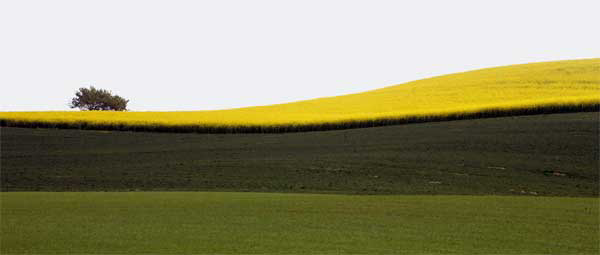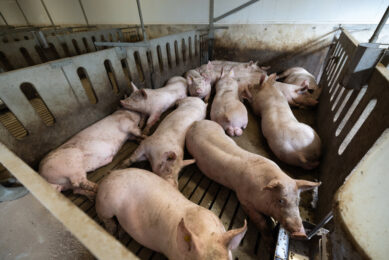Profitable protease benefits the environment

Environmental sustainability in agriculture refers to a reduction in the impact of agriculture on the environment so that we can preserve the quality of our living environment and prolong the useful ‘lifespan’ of agricultural land and other resources. Enzymes could help us with that.
Environmental sustainability is about ensuring that agricultural activities, which are for the benefit of mankind, do not end up actually harming future generations and us. To better understand how this works, let us review what happens when protein (the second most expensive nutrient in poultry diets) is not used wisely: undigested protein ends up in manure. Protein in manure is rapidly converted to ammonia, nitrate and nitrous oxide, all being highly undesirable compounds. Ammonia emissions into the atmosphere cause water acidification (acid rain). Nitrate eventually leaks into the water systems causing loss of biodiversity, not to mention direct human health risks, whereas nitrous oxide, carbon dioxide and methane are important contributors of global warming. It is evident, therefore, that something as beneficial (and expensive) as feed protein can actually cause significant damage when used in excess. But, it does not have to be like that.
The importance of enhancing our understanding of the impact of agriculture on the environment is highlighted by joint industry and academia projects. Researchers in such projects are using computer-modelling tools to look at the environmental impact of the sector, better known as Life Cycle Assessment (LCA). Into this process, variables such as dietary composition, husbandry, facilities, and any new technologies can be factored in and their impact on the environment calculated, so that the best-case scenario can be determined regarding profitability and sustainability.
Now, many would consider that in order to achieve a higher degree of environmental sustainability we have to actually increase the cost of poultry production, and indeed, in some cases this might be true. But coming back to protein, this is clearly not the case, and indeed, improved sustainability can be achieved while actually increasing profitability; and this is the direction being followed today by modern feed and poultry producers worldwide.
To achieve this goal:
- We must ensure that protein (amino acid) specifications are set at the right level and in the correct balance for the genetics and production capability of the animals we are feeding.
- We must minimise safety margins by reducing the variability in such factors that call for these margins.
- We need to optimise protein digestibility by using highly digestible ingredients or adding an enzyme (protease) that enhances feed protein digestibility.
This last solution is the current focus of activity and discussion in the research and commercial poultry sectors, worldwide. Up until recently, available proteases were part of commercial enzyme cocktails. Although any proteolytic activity was considered beneficial, it was not guaranteed, and thus, it was not taken into account during feed formulation. With the introduction of the first pure protease (under the name of Ronozyme ProAct by DSM) it is now possible to control, measure, and take into account the enhanced protein digestibility conferred by the use of such a nutritional intervention strategy. Here, it should be mentioned that this particular enzyme increases amino acid digestibility of a wide range of natural feed ingredients by 3-8%. Use of this benefit to formulate lower protein diets translates into a reduction in feed (including the cost of the enzyme) costs of up to 2 euro-cents per broiler.
Less soybean meal use
Although this is not the focus of this discussion, it pays to highlight that profitability and environmental sustainability are not mutually exclusive. In fact, not only production costs can be reduced, but also, by increasing protein of protein-rich ingredients we use in poultry feed. If we were to use less soybean meal, then we would need to grow less soybeans; reduce the amount of fertilisers being produced, used, and leaked into the environment; reduce the amount of energy needed to plant, grow, harvest, transport, process, and mix these soybeans into poultry feed. Considering the vast importance of poultry meat and eggs worldwide, we are talking about a huge impact by a single nutritional adjustment in poultry feed.
The fact that such enzymes are considered among the most potent tools in safeguarding our environment can be illustrated by the very fact that in the Netherlands, the use of phytase (for phosphorus reduction in feed) in poultry feed is now required by law. It could very well be the case that in the near future such movements will be adopted by other countries (especially those with already stretched agricultural resources) and could include not only phytase but also protease, and perhaps other enzymes too. Not an unlikely scenario, considering the case of antibiotics.
A peer-reviewed paper, recently published in the International Journal of Poultry Science (2011), by Drs. Oxenboll, Pontoppidan, and Fru-Nji (a joint research project by Novozymes and DSM) has looked at the environmental impact of a protease on the whole broiler production chain using LCA methodology. This LCA study has considered changes along the whole value chain, from growing feed raw materials to handling broiler manure. All results were calculated for the production of one ton of live broilers using a protease (Ronozyme ProAct) in either a normal diet or to support the use of a lower-protein diet without any loss of performance. Performance and digestibility data, which were on par with expected values, for this LCA study were taken from the publication of Freitas et al (2011). The overall changes included reductions as well as increases of environmental load: reductions were from less production of feed ingredients and emission of nitrogen compounds, whereas increases related to the production of protease and the additional fertiliser needed to compensate for the lower nitrogen content of manure being applied to land as fertiliser. Results are presented in the graphs.
Reduced protein – reduced nitrogen
From these results, it is evident that using an effective protease can significantly reduce the environmental impact of broiler production in terms of air and water systems quality. It was also demonstrated that use of a protease in reduced protein diets (the typical commercial approach to use) provides a much higher environmental benefit than using the protease on top of a normal protein diet.
Putting the results into perspective, we can estimate that nitrogen content of manure can be reduced by up to 15% and ammonia emissions by up to 35% (these figures are in the same order of magnitude as those reported from the use of synthetic amino acids).
If all broilers were fed Ronozyme ProAct and a low protein diet, then:
(a) in the European Union, from reduced ammonia emissions, the protease could contribute almost 40% of the level of reduction expected from implementation of the new animal housing regulations (28,000 versus 75,000 tonnes per annum); and
(b) in the, USA from reduced nitrogen excretion in manure, protease could deliver a reduction of 32,000 tonnes nitrogen per year, contributing significantly to the targeted 50,000 tonne reduction required by regulations.
Here, it should be stressed that results from the above study are more conservative than in other similar studies. More aggressive results indicate that the reduction of environmental impact can be even stronger. For example, in one study, acidification was reduced by triple the amount suggested by the above study, whereas in another one, global warming impact was reduced almost five times more that in this more conservative study.
Land savings
A very interesting calculation, based on the above results for European producers is the reduction in land area required to raise broilers when a protease is used. It is estimated that 15.9 million tonnes of broiler meat is produced each year in Europe (FAOSTAT 2010) and the limit for organic N application is 170 kg nitrogen per hectare. When using the conservative estimation of reduced nitrogen in manure due to the use of the protease in a low protein diet (-1.427 kg/t broilers) and adjusting this for any loss due to nitrogen volatilisation, we reach savings of 80,000 hectares. Put in another way: the use of Ronozyme ProAct in low protein diets will allow an extra 310 million 2.5-kg broiler chickens to be reared annually without the need for any extra land to dispose of the manure produced.
[Source: Enzyme special]
Authors:
Adam Smith (DSM), Katrine Pontoppidan and Karen Margrethe Oxenbøll (Novozymes)











